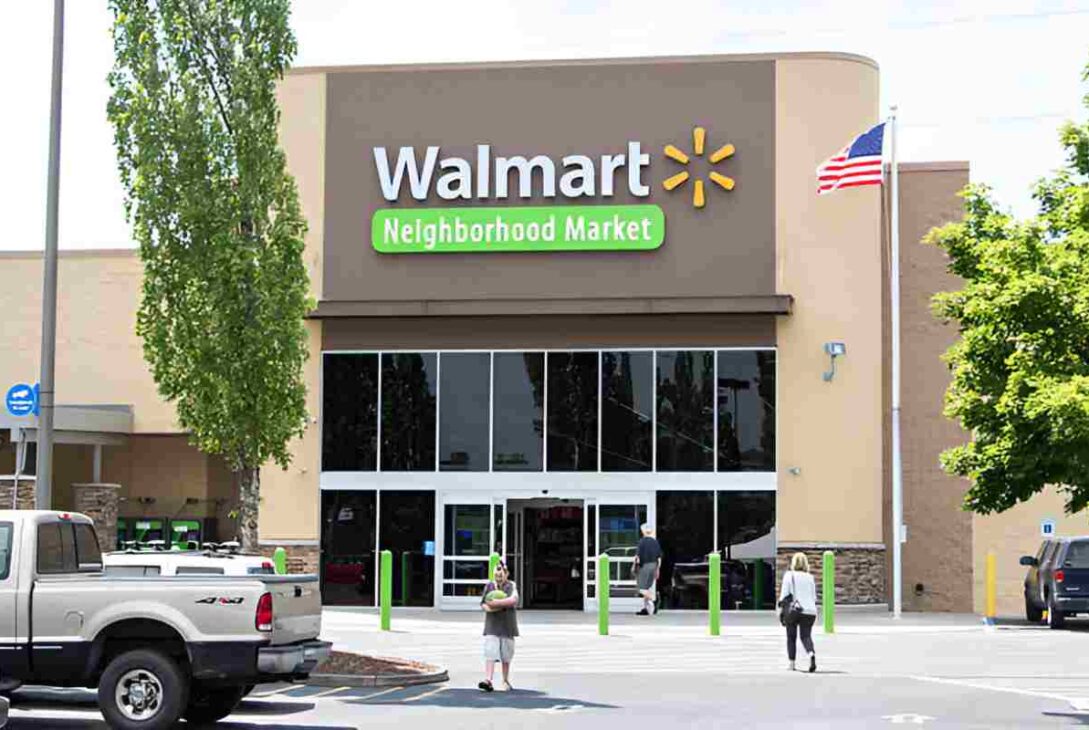Introduction
Walmart Neighborhood Market is a strategy that has expanded since its conception in 1998. Thus, the large supercentres are the key to branding the neighborhood markets as small formats that provide convenience and a unique setting for customers yet present a low-cost and broad product range. These stores have significantly changed grocery store shopping by satisfying the local communities’ demand that the large Supercentre stores do not serve.
A Brief History
The first Walmart Neighborhood Market store was opened in Bentonville, Arkansas, to note that the first store of Walmart was established. The plan was to design a type of store that primarily sold food, something that could be easily anchored into cities and towns where a Walmart Supercentre might be too large. Thus, it has been defined and developed even more over the years.
Walmart Stores in the U.S.
Walmart Neighborhood Market is a small format supermarket chain that sells a variety of fresh foods, deli, bakery, meat, produce, Kroger, household supplies, general grocery store. Bigger than Walmart stores but not as large as Walmart supercenters, these markets aim at giving the customer’s speedy service. Products ranging from organic foodstuff, to prescription services, and fuel stations are also available. The store format that is prominent for every day low price and walking down the aisle greeting approach aspires to serve the daily shopping basket needs of the local consumer. In line with this, the stores also promote environmentally friendly products as well as products from local producers, thus being among the preferred stores for daily purchases.
- Alaska
- Alabama
- Arkansas
- Arizona
- California
- Colorado
- Connecticut
- District of Columbia
- Florida
- Georgia
- Hawaii
- Iowa
- Idaho
- Illinois
- Indiana
- Kansas
- Kentucky
- Louisiana
- Massachusetts
- Maryland
- Maine
- Michigan
- Minnesota
- Missouri
- Mississippi
- Montana
- North Carolina
- North Dakota
- Nebraska
- New Hampshire
- New Jersey
- New Mexico
- Nevada
- New York
- Ohio
- Oklahoma
- Oregon
- Pennsylvania
- Rhode Island
- South Carolina
- South Dakota
- Tennessee
- Texas
- Utah
- Virginia
- Vermont
- Washington
- Wisconsin
- West Virginia
- Wyoming
Store Layout and Offerings

Neighborhood markets are usually between 30000 and 40000 sq ft, primarily supermarkets, while Walmart’s Supercentres are larger than 180000 sq ft. These stores are easily accessible and designed so clients can locate the products independently, enhancing time efficiency.
However, it is vital to note that the analyzed type of stores, the Neighborhood Markets, tend to be rather congested with all kinds of goods. The available products at the business are fruits and vegetables, meat and dairy products, bread and confectionery, frozen foods and groceries, medicines, nuts, bolts and screws, health and beauty aids, toys, shoeshine and other items. Mainly, the core of many store outlets contains pharmacy services that help obtain prescription medicines and healthcare services.
The format of Walmart Neighborhood Market is very efficient. With well-lit and distinctive rows of shelves and signs, customers do not lose their way in a large store to reach what they want. The essential feature is an orientation towards rapid customer turnover while maintaining customer satisfaction; thus, rapid turnover is seen as a positive result.
Competitive Pricing and Savings
Two-thirds of the company’s stores have consistently marketed price-cutting as a significant strength, and the Neighborhood Markets possess this attribute. Therefore, due to this strategy, some stores can offer their merchandise at lower prices than Walmart’s local competitors. In this case, consumers can save money on grocery bills, given that neighborhood markets have comparatively low everyday prices and are well-known for special offers and sales.
Other revolutionary actions include developing the company’s private brands… Companies such as Great Value and Equate offer a quality product that is considerably cheaper than the national brands, which adds to the store’s consumer appeal.
Community Engagement and Convenience
WINM is more than just an area for food retailing; the company wants to see its stores as a vital component of the shoppers’ neighborhoods. This is done through activeness in charity organizations, school sponsorships, community activities, etc. Thus, these stores promote a positive atmosphere and strengthen the residents’ sense of community.
Another advantage attributable to the convenience factor is a possible increased concern with purchasing merchandise from the firm. Most neighborhood markets even have curbside pick-up and home deliveries from online shopping, which has been initiated to make buying goods easier without the need to come to the store. It is advantageous to bear in mind the cutthroat socio-economic calendar that families, aged, and disabled persons are still bound to in society.
Walmart Neighborhood Market Challenges and Opportunities
Recently, Walmart Neighborhood Market has been among the most popular supermarkets in the United States of America; however, it has unique issues. Intense competition exists from other Grocery store chains, both large and small. Also, the increased use of social media applications for purchasing groceries online and other products through companies’ logistic services has or has not influenced Walmart’s work.
Nevertheless, these are not entirely negative because they also contain some opportunities. Applying highly developed technologies and data analysis at Walmart helps to know more about consumers’ needs and responses. Walmart Neighborhood Markets’ ability to fend off competition In an ever-evolving market, the continuation of increasing online services will also help improve the supply chain, which will also be important in ensuring that Walmart can sustain the growth of Neighborhood Markets.
The Future of Neighborhood Markets
In the future, WNMs are expected to become a more significant part of Walmart’s strategy. In light of changing trends, where consumers’ choice of where to shop has deemed convenience paramount, coupled with individual convenience as seen in online purchasing stores, it is set to increase. Therefore, Walmart’s management will need to adapt to the mentioned changes and persevere in delivering its value proposition to customers to ensure the effectiveness of the Neighborhood Market concept.
Conclusion
Therefore, Walmart Neighborhood Markets has developed its own highly specialized firm in the grocery retail industry. Thus, incorporating wholly-owned local grocery stores with Walmart’s low-price strategy and diverse product assortment appeals to consumers. Since both Walmart and Walgreens continue to grow and develop their chains of stores, Walmart Neighborhood Markets are poised to remain competitive in grocery shopping formats for the years to come.



